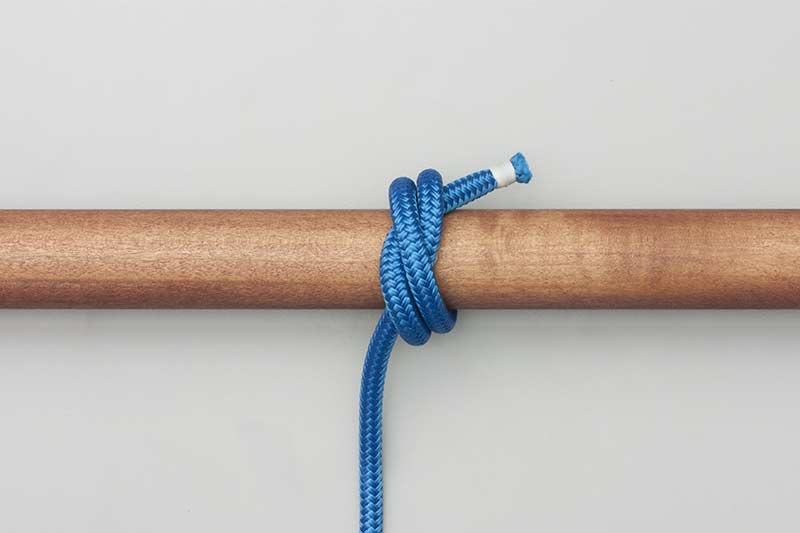Moderately reliable to secure a bag or a fraying rope's end.
Strangle Knot – Using End
Moderately reliable to secure a bag or a fraying rope's end.
 |  |

 |  |  |  |  |
To Step use Arrow Keys (
Uses: The Strangle Knot (ABOK # 1239, p224) is essentially the same as the Double Overhand Knot (ABOK # 516, p 84.) and may tied as such for some applications.
Alternative techniques: In addition to using the end as shown in the animation, it can also be tied as a loop by forming a Double Overhand Knot and slid over a pole or sack.
Applications: A Strangle Knot makes a reasonably secure temporary whipping and can be used to secure the neck of a bag or sack.
Disadvantages: The Strangle Knot is less secure than the Constrictor Knot and cannot be tied by just twisting a loop. In addition, there is a significant risk of it being laid down wrongly so that it only forms a half knot beside two turns (see the final frame in the animation).
Release: Like the constrictor, the Strangle Knot can be hard to undo – a knife may be necessary. If so, the binding strand should be cut over the other strands to protect the underlying rope.
Rope Size: The pictures here show the rope tied in large diameter rope. This is only for the photography. It is normally tied in twine or other small diameter line.





